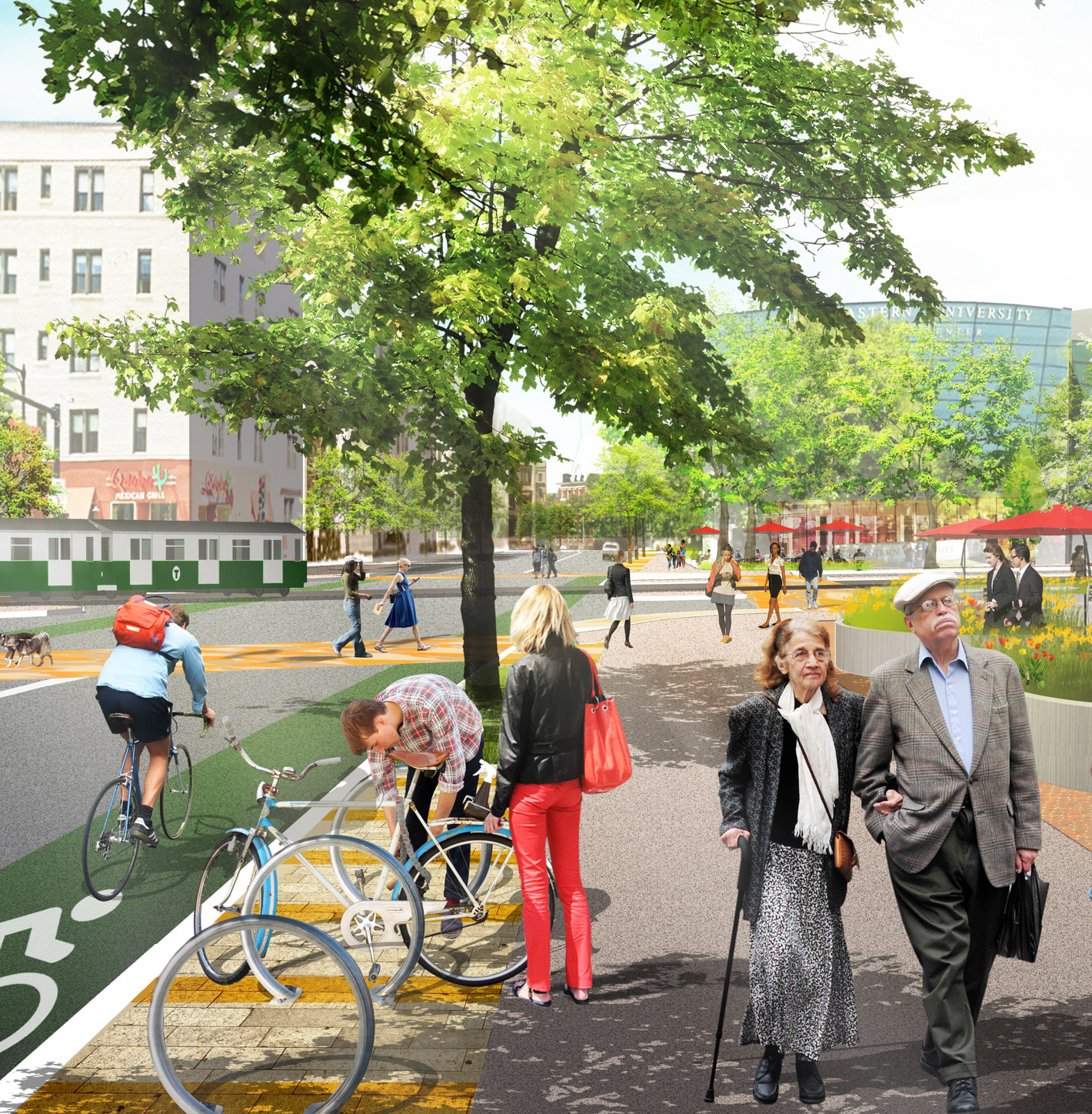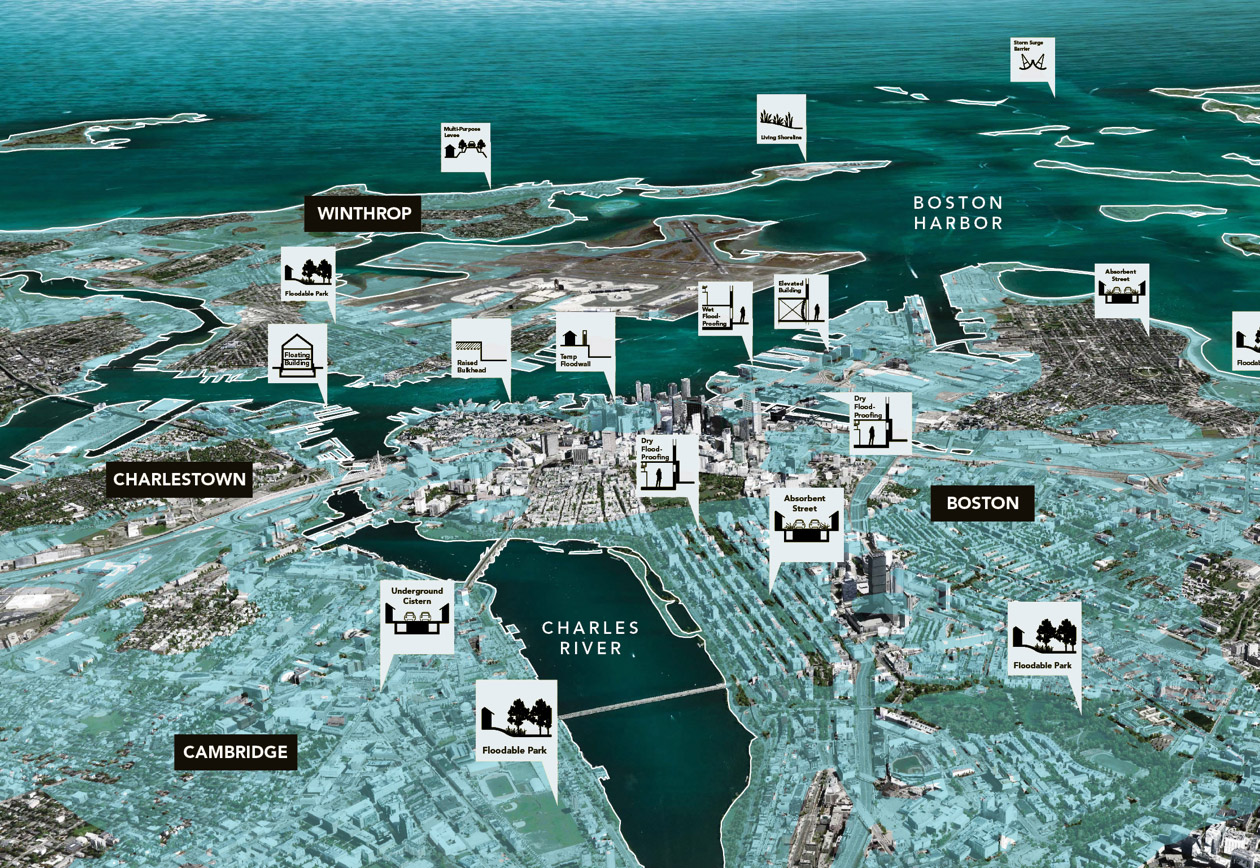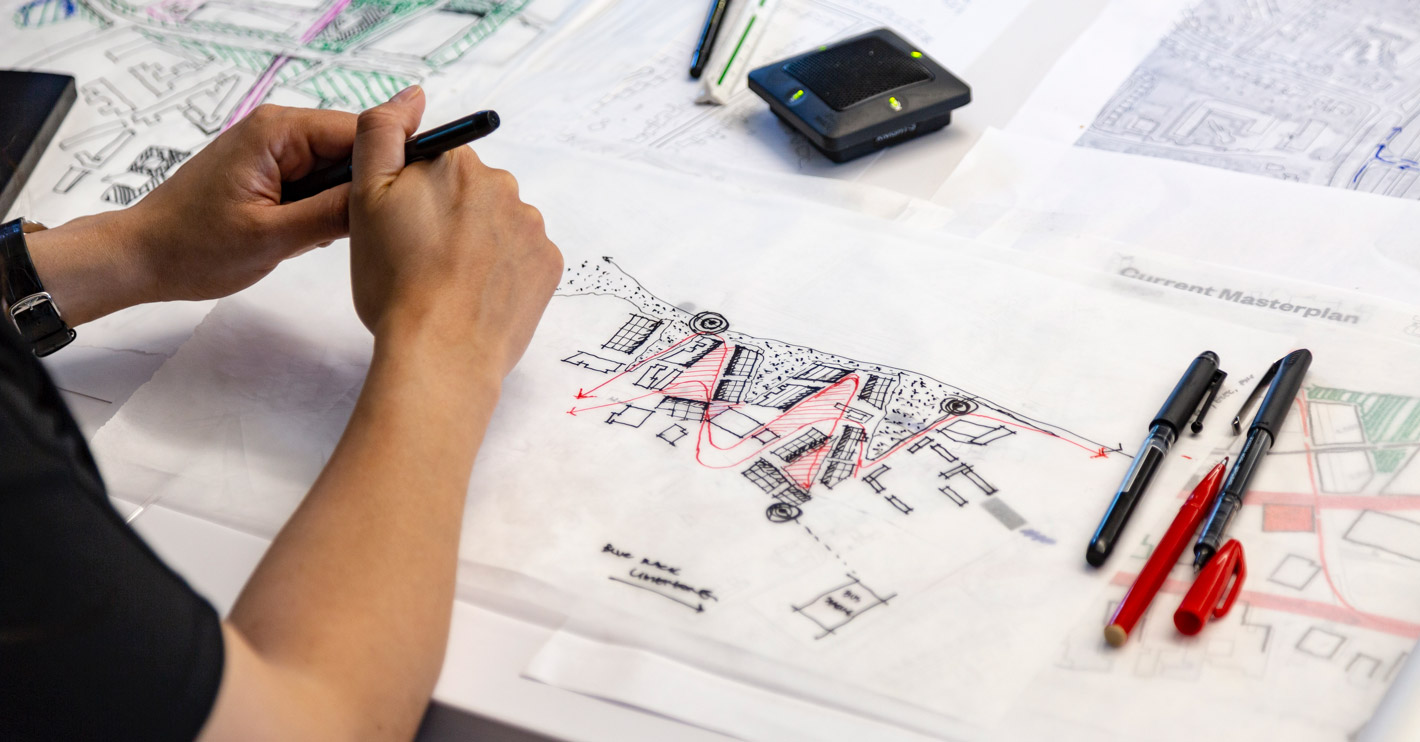WinterLight Pavilion
Rose Kennedy Greenway
Boston, Massachusetts
Sasaki Foundation
We leverage design to tackle global challenges—especially those that adversely affect certain communities.
Call for Proposals
If you have ideas on how to tackle climate adaptation, housing or transit inequities, or displacement of residents, apply today for one of our design grants focused on resilience.
The deadline to apply is September 4, 2018.
Grants
We will award up to 4 grants of $15,000 each to winning teams.
We Need You
No matter who you are, we need your skills.
We are looking for interdisciplinary, creative approaches to test new design concepts that address complex challenges in our communities.
The call for proposals
How can we help all communities to be proactive and to grow?
Resilient communities are strong communities. Unfortunately, some communities—especially those that are primarily people of color or historically low-income —are disproportionately impacted by environmental, economic, and social challenges. And yet, when steps are made to design the built environment in these areas, the voices of these communities are often left out of the process.
While these issues are felt throughout the world, some of the most impacted communities are right here in Massachusetts. We are therefore seeking projects that engage communities in the Gateway Cities, Metro West, and Greater Boston.

1
Proactive Approaches to Climate Adaptation
Responses to extreme heat, stormwater and flash flooding, and coastal and river flooding. In cities like Boston, these issues, especially the urban heat island effect and flood risk, disproportionately impact communities of color and low-income communities.
- How can investments in climate resilience do more to meet the environmental and social resilience needs of Greater Boston’s neighborhoods?
-
How can we increase local awareness of resiliency, and informing systems-level approaches to climate risks and solutions?
-
How can we model best practices for reducing carbon emissions, increasing building energy efficiency, and improving urban stormwater management?
2
New Models for Housing
Strategies to improve housing affordability, promote a more diverse housing stock, and address gentrification and displacement. Displacement of families, caused by economic and environmental forces, is exacerbated by the limited supply of affordable, family-oriented housing units.
- How can we improve public health through new housing and community designs?
- How can design be used to help keep people in their homes and communities (e.g., community land trusts, zoning, accessory dwelling units, re-parcellation of land)?
- What are opportunities to incorporate resilience strategies for buildings or education for residents into building retrofits or new construction?
3
Innovation in Transit and Access to Mobility Choices
Developing design strategies and solutions for existing challenges to reliable transit; strengthening public-private partnerships in expanding transportation choices and leveraging technology to provide greater access to transportation options by eliminating barriers.
Urban reinvestment in transportation in an era when people are attracted to transit-accessible, walkable, and bike-able places can contribute to the rate of displacement among communities of color and low income communities. Meanwhile, the proximity to reliable and affordable transportation choices is key to income mobility and increased access to jobs, education, and social networks. We seek methods for leveraging private-sector innovation to increase access to transportation services for all communities.
- How can we better connect communities of color and low income communities to transportation networks (car/ride/bike-share, bicycle lanes, rapid transit lines, on-demand transport, water transportation)?
- How can your community better access technology to improve mobility?
- How can new transportation solutions help create resilient communities?
4
Creative Community Building
Themes of collective memory and community storytelling, historic preservation, and local business development. Our interests extend beyond the concept of place-making to include the idea of place-keeping — the preservation of local identity through strengthening social bonds; celebrating neighborhood history; and developing strategies for enhancing neighborhood retail, food, and health services.
- How do we maintain authenticity while reinvigorating the social and economic well-being of a given community?
- What are creative opportunities for adaptive reuse of buildings or vacant lots to enrich communities?
- How can we build local capacity for economic development and promote local entrepreneurship?
Evaluation Criteria
1
Design
We want to pursue interdisciplinary thinking and challenge the status quo. We seek design ideas that will do something for the community, not just think about it. Winning teams will have actionable ideas, and proposals will be judged on both their creativity and their feasibilities. Proposals should also address resiliency and equity through one of the four topic areas discussed in Section 04.
2
Equity
We are looking for proposals that benefit historically underrepresented communities through strategies aimed at eliminating systematic obstacles. Winning teams will show how their projects meet the unique needs of a community through a high level of collaboration with community representatives.
3
Inclusion
We value a variety of voices and seek to address inequities related to identity. We especially encourage proposals from women; transgender, genderqueer, or gender non-conforming individuals; members of racial or ethnic minorities; and individuals with physical and/or intellectual disabilities.
4
Innovation
Proposals will be judged on their innovation, creativity, and multidisciplinary approach. Special attention will be given to teams that propose forward-thinking, rather than reactive, concepts and ideas.
5
Impact
Proposals will be evaluated based on their potential for impact within the community they are looking to serve. Winning projects will exhibit scalability or replicability across other communities with similar characteristics.
Judges
Our judges are representatives from design, transit, housing, and environmental organizations.

Sea Change: Boston
Boston, Massachusetts
Program Guidelines
Residency and Access to Sasaki Designers
Winning teams will have a 9-month tenure in the Incubator at Sasaki in Watertown, MA, with regular meetings to help share ideas and problem-solve. Teams will consult with Sasaki’s design professionals, including: landscape architects, planners, urban designers, architects, interior designers, civil engineers, graphic designers, and data analytics and visualization experts. Teams may also leverage Sasaki’s FabLab and design software.
Community Focus
Equity is one of the cornerstones of Sasaki Foundation’s research, and all winning proposals must have a community focus. A Community Advisor (local leader, non-profit professional, designer, artist, business leader, or other individual) from the community on which the project focuses will be required to be an active member of the team.
Team Approach
Applicants must be teams of two to four individuals. One of these individuals must be a Community Advisor from the community on which the project is based. Teams may consist of either “Groups”—i.e. individuals coming together for the purpose of this proposal—or “Organizations”—e.g. Non-profits, Firms, Collectives. We encourage teams to be multidisciplinary in their composition and thinking.

Team at Incubator at Sasaki
Watertown, Massachusetts

Deliverables
Applicants will submit a plan of work, including projected use of funds and projected budget. Winning teams will meet with the Foundation to have a midterm review of their project plan during their residency. Teams will also create a visual final deliverable to be presented at their final presentation. The final deliverable will be featured on the Sasaki Foundation’s website.
Storytelling
Teams are expected to create a compelling narrative describing how their design ideas or projects meet the specific needs of a community. Part of the narrative will include a plan for outreach and engagement for their focus community.
Open Source
To ensure the dissemination of the strategies generated through this effort, teams will commit to their project concepts and ideas being open source. Winning teams will focus on the development of design-thinking methods and digital tools that can help stimulate communities’ abilities to express themselves and their needs, with an emphasis on collaboration and co-production.
Timeline: 2018
June 28
Call for Proposals issued — rolling submissions
July 26
Open House for Applicants in the Incubator at Sasaki
September 4
Deadline to submit applications
September 18
Finalists announced
September 26
Pitch night for finalists in the Incubator at Sasaki
October 1
Grant winners notified and announced
October 2018 – June 2019
Grant winners take residency in the Incubator at Sasaki
Questions
Social Media
Open House
An Open House for applicants will be held on Thursday, July 26, 2018 from 5:30 to 7:30 p.m.
